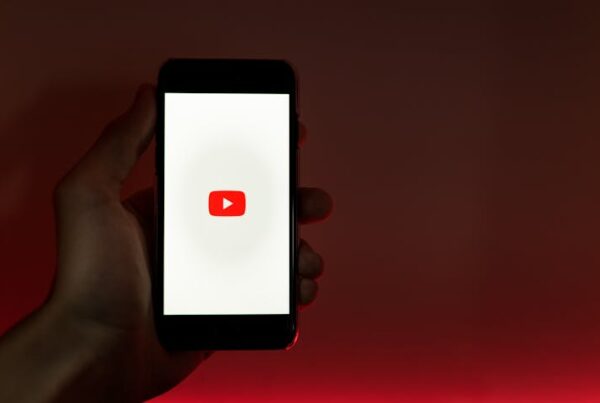Want your YouTube videos to climb the ranks and bring in more subscribers? You’re not alone. Whether you’re a blogger, website owner, or content marketer, cracking the YouTube algorithm can seem like a puzzle — but it doesn’t have to be.
Let’s break down the essentials of YouTube SEO and show you how to optimize your videos, grow your channel, and keep viewers coming back for more.
Why Ranking Higher on YouTube Matters
YouTube is the second-largest search engine in the world — right after Google. With over 2 billion logged-in users each month, showing up in YouTube’s search results and recommended videos can supercharge your online presence.
When your videos rank higher, you:
- Get more views and watch time
- Grow your subscriber base
- Build authority and trust in your niche
- Increase opportunities for monetization and brand deals
Think of your video like a storefront. If it’s buried in the back alley of search results, no one’s going to find it — let alone walk in. But if it’s front and center, people will stop, watch, and hopefully hit that “Subscribe” button.
YouTube SEO 101: What Is It?
YouTube SEO is the process of optimizing your videos, channel, and metadata (like titles and tags) to help your content show up in YouTube’s search results and recommendations.
It involves a mix of:
- Keyword research
- On-page optimization (titles, descriptions, tags)
- User engagement signals (watch time, likes, comments)
- Video quality and structure
Imagine YouTube as a big library. SEO is how you organize your book (video) so the librarian (the algorithm) knows exactly where to place it — and who should read it.
Step-by-Step Checklist: How to Rank Higher on YouTube
Here’s your practical, beginner-friendly guide to optimizing your YouTube videos:
✅ 1. Start with Keyword Research
Before filming, research what your audience is searching for.
Tools to try:
- TubeBuddy
- vidIQ
- Google’s autocomplete or “People Also Ask” section
Example:
Instead of “Marketing Tips,” try “Marketing Tips for Small Business in 2025.”
✅ 2. Optimize Your Video Title
Make it clear, compelling, and include your main keyword.
- Keep it under 60 characters
- Add curiosity or urgency: “How to Fix SEO Mistakes Fast (Beginner’s Guide)”
✅ 3. Craft a Descriptive, Keyword-Rich Description
Use the first 2–3 lines to hook viewers and include keywords naturally. Think of this like the meta description for your video.
Include:
- A summary of the video
- Timestamps for chapters
- Links to your website or socials
✅ 4. Use Tags Wisely (Even if They’re Less Important Now)
Tags help with misspellings and context. Don’t go overboard. Just include relevant keywords and variations.
Example Tags: email marketing 2025, email automation tips, how to grow your list
✅ 5. Design Click-Worthy Thumbnails
Your thumbnail is the first impression. Make it bold, clear, and curiosity-inducing.
Tips:
- Use large, readable text
- Show facial expressions
- Keep colors high-contrast
Think of it like the cover of a book. People will judge your video by it!
✅ 6. Add Captions and Transcripts
Closed captions and transcripts improve accessibility and SEO. YouTube can better understand your content, which helps with ranking.
Use tools like:
- YouTube’s auto-captioning (then edit for accuracy)
- Rev.com
- Descript
✅ 7. Encourage Engagement
Ask your viewers to:
- Like 👍
- Comment 💬
- Subscribe 🔔
- Share the video
Why? Because YouTube loves videos with high engagement. It’s a sign your content is valuable.
Example CTA:
“Let me know in the comments which tip you’re going to try first!”
✅ 8. Optimize for Watch Time
The longer people watch, the better your video ranks.
Here’s how to keep them watching:
- Hook them in the first 15 seconds
- Tease what’s coming later
- Use jump cuts, B-roll, and on-screen text to keep things dynamic
✅ 9. Use Playlists Strategically
Group related videos into playlists to boost session duration and binge-watching.
Pro tip: Optimize playlist titles and descriptions just like individual videos.
✅ 10. Promote Your Videos Off-Platform
Don’t rely on YouTube alone. Share your video:
- On your blog or website
- Through your email list
- On social media platforms like LinkedIn, X (Twitter), or Reddit
Recommended Tools and Resources
Here are some tools to help you manage and grow your YouTube channel more efficiently:
| Tool | Purpose |
| TubeBuddy | Keyword research, analytics, A/B testing |
| vidIQ | Competitor analysis, keyword tools |
| Canva | Custom thumbnails |
| Descript | Captions, editing, transcripts |
| Morningfame | SEO optimization and growth tracking |
Common Mistakes to Avoid
Let’s save you some frustration. Here are a few traps to steer clear of:
❌ Keyword stuffing in titles or descriptions
Keep it natural. You’re writing for people and algorithms.
❌ Using clickbait that doesn’t deliver
If your video title promises something you don’t provide, viewers will leave — and your watch time will tank.
❌ Ignoring analytics
If you’re not checking what’s working (and what isn’t), you’re flying blind.
❌ Inconsistent posting
Consistency helps the algorithm know when to expect content from you.
Final Thoughts
Ranking higher on YouTube and gaining more subscribers doesn’t happen overnight. But with the right strategy — and consistent effort — you’ll build a loyal audience and start seeing results.
Remember: YouTube rewards valuable, engaging content. Focus on helping your audience, and the algorithm will take notice.
Start with just a few of these steps today. Tweak your titles. Add timestamps. Create a fresh thumbnail. It adds up — and your future subscribers will thank you for it.
FAQs: YouTube Ranking and Subscriber Growth
1. How long does it take for a YouTube video to rank?
It can take anywhere from a few hours to a few weeks. New channels may take longer, but consistent posting and optimization help speed things up.
2. Do I need to upload every day to grow?
Nope! Quality matters more than quantity. Posting once or twice a week with optimized, helpful videos can be more effective than daily uploads.
3. Are hashtags on YouTube worth using?
Yes, but sparingly. Use 2–3 relevant hashtags to help categorize your video, but don’t overdo it.
4. What’s the ideal video length for YouTube SEO?
10–15 minutes is a good sweet spot for most niches. Long enough to deliver value, short enough to retain attention.
5. Can I still grow a YouTube channel in 2025?
Absolutely. YouTube is still growing, and niches are always evolving. Start now, optimize smartly, and stay consistent.


